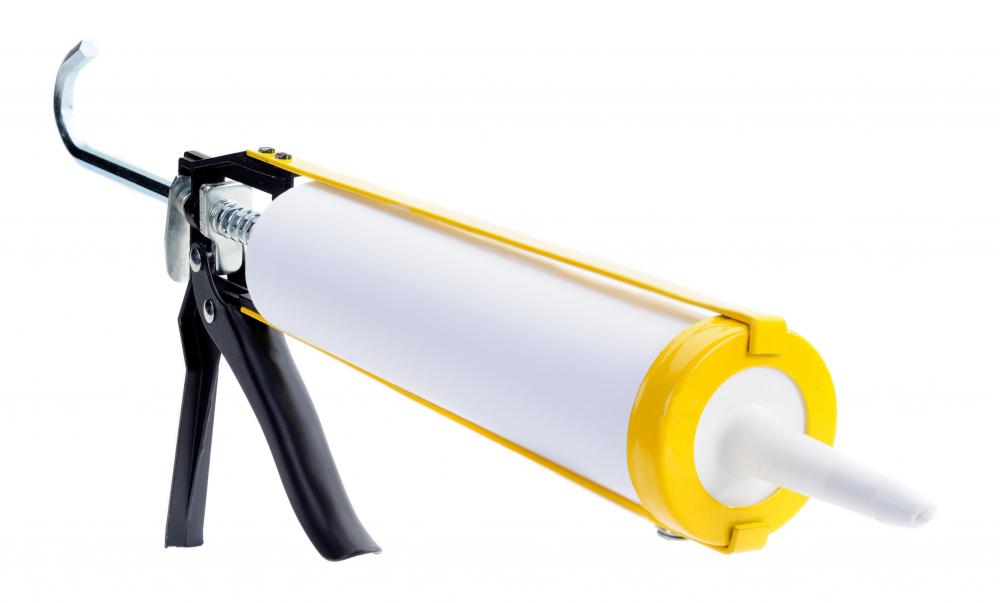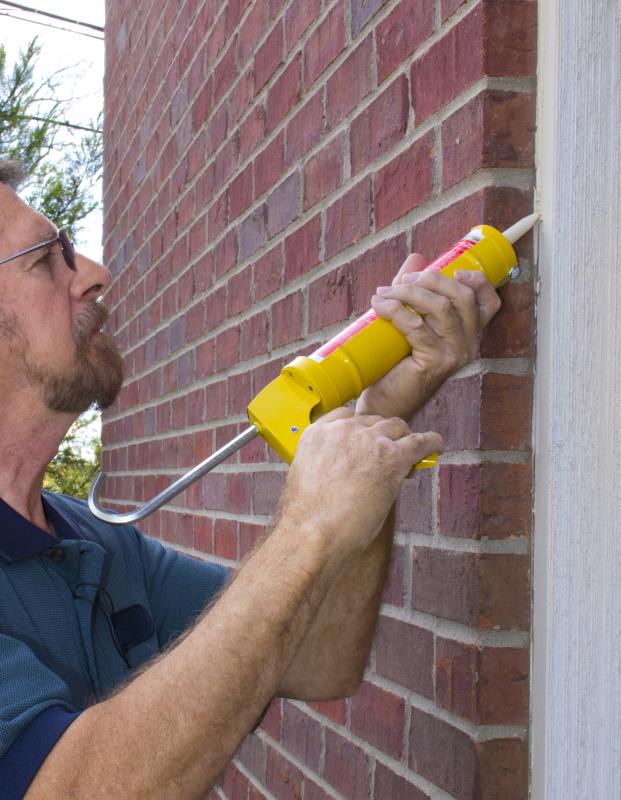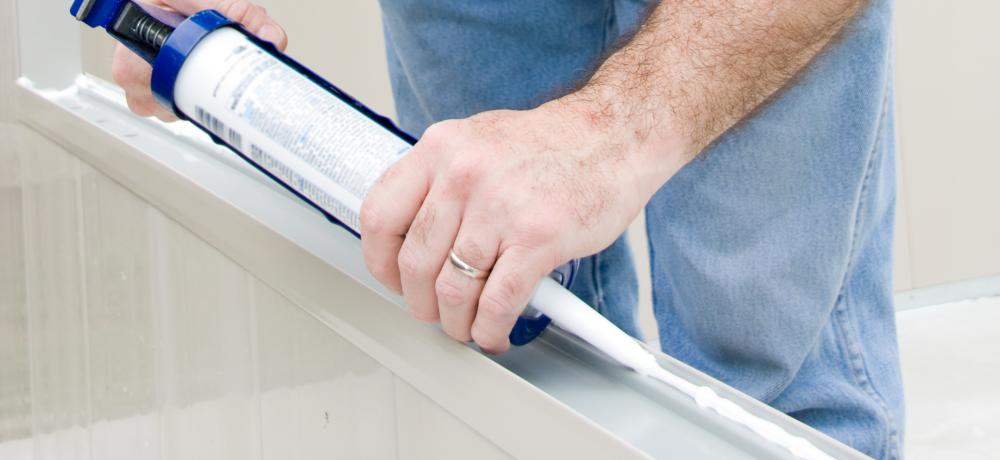At HomeQuestionsAnswered, we're committed to delivering accurate, trustworthy information. Our expert-authored content is rigorously fact-checked and sourced from credible authorities. Discover how we uphold the highest standards in providing you with reliable knowledge.
What is Rubber Caulk?
There are a number of types of caulk available, each made out of a different substance with various specialties. One of the most common types is rubber caulk. Like any other kind, it usually is best for sealing gaps in diverse materials. It has its own specialties that set it apart from other types, and the main kinds often seen are butyl rubber caulk and silicone caulk.
One of the main types formally is called butyl rubber caulk, which typically lasts for about ten years. Though it only tends to come in one color, it is easy to paint over, and it does have many uses. Most users fill in gaps and cracks in brick and concrete masonry with it, but it also can be applied to metal. It also sticks well to rubber, plastic, wood, stone, vinyl, and mortar. Some of its most common uses include sealing gutters, roof vents, pipes, drain spouts, and vinyl siding on houses.

Another common type of rubber caulk is the silicone kind which tends to stay flexible after its application. It dries rather quickly and is watertight. Silicone caulk typically is used to seal gaps around doors, windows, trim, molding, baseboards, and kitchen and bathroom sinks. It usually sticks particularly well to glass, tile, wood, and drywall. Unlike butyl caulk, this type typically cannot be painted over, but it usually lasts about three times as long as the butyl kind.

The fact that rubber caulk can create a watertight seal often makes it useful outdoors. It usually is important to choose the right caulk for the job, considering the number of variations available. For example, while butyl rubber caulk works particularly well outside, such as in concrete cracks, it might not be the best choice for bathrooms and kitchens. Instead, silicone caulk could do a better job. In fact, sometimes caulk other than the rubber kind is best, depending on the project.

In most cases, any kind of caulk works best when applied to a clean, dry surface. If caulk does not do the job, it often is either due to faulty preparation of the area, or it is the wrong selection for the job. Additionally, the proper cleanup should be noted before using the chosen type of caulk. Since they are not water-based, it often is difficult to clean up either silicone or butyl caulk as they usually require the use of a special solvent rather than just soap and water.
AS FEATURED ON:
AS FEATURED ON:













Discussion Comments
I have a good friend that is really creative. He is one of those people that can look into a dumpster, pull out a few things and make a piece of art that looks like nothing you have ever seen.
He did a project a couple of years ago where he made sculptures out of rubber caulk. He would add layer on top of layer until he had made these beautiful pieces that looked like something in a cave. They had the chalky white color of the caulk and a craggy, bended look. Its hard to describe but trust me, they were incredible to look at.
I always thought it was such a cool idea. Who would think to use caulk to make art?
I work as a plumber and rubber caulk is one of our best friends. Water is a tricky thing. It goes pretty much everywhere and its not easy to control. But rubber caulk is just about the best thing you can use to seal a sink or a bathtub.
I always hated it when my dad would have to caulk something in the house. It smelled so bad! The odor reminds me of vinegar, and it lingers while the stuff dries.
I remember when he had to caulk the baseboards, because the gaps between them and the wall had become so large that insects were starting to hide in them. He had to spread caulk over the entire house!
The smell overwhelmed me. I had to stay at a friend’s house until late the next day when the smell had finally faded. Caulk just has one of those odors that make nauseate me.
@wavy58 - Silicone caulk is great, especially if you live in an older house. I recently moved into a home that was built fifty years ago, and I need both rubber and silicone caulk to do some repairs.
The doors and windows were letting in way too much outside air. Silicone caulk sealed the cracks tightly and helped me save on the natural gas bill.
The sidewalk and the edge of the carport were filled with large cracks. I used rubber silicone to stick the pieces of concrete back together, and then I painted the silicone to match the surrounding area.
I used rubber caulk to attach my garden stones to each other. I wanted to create an area around the flowers where no weeds could grow, so the cracks had to be filled. I wanted it to look like a small patio.
I arranged the stones the way I wanted them to lay permanently. Then, I filled the spaces between them with rubber caulk.
I decided to paint the caulk a color slightly darker than the stones. This would make it look more natural, like shadows.
The caulk held the paint well. I set up the stones five years ago, and I haven’t had to repaint or re-caulk since.
I never knew that there was more than one kind of caulk. The only kind I’ve seen feels and looks like rubber, so I just assumed they were all rubber. After reading this, though, I think it is silicone caulk, because my dad uses it to seal openings around window frames.
Last year, we noticed a cold draft coming in around the windows. My dad went outside and used the caulk gun to squirt the gooey stuff around the edges of the panes. Even after it dried, it was rubbery instead of hard.
Post your comments